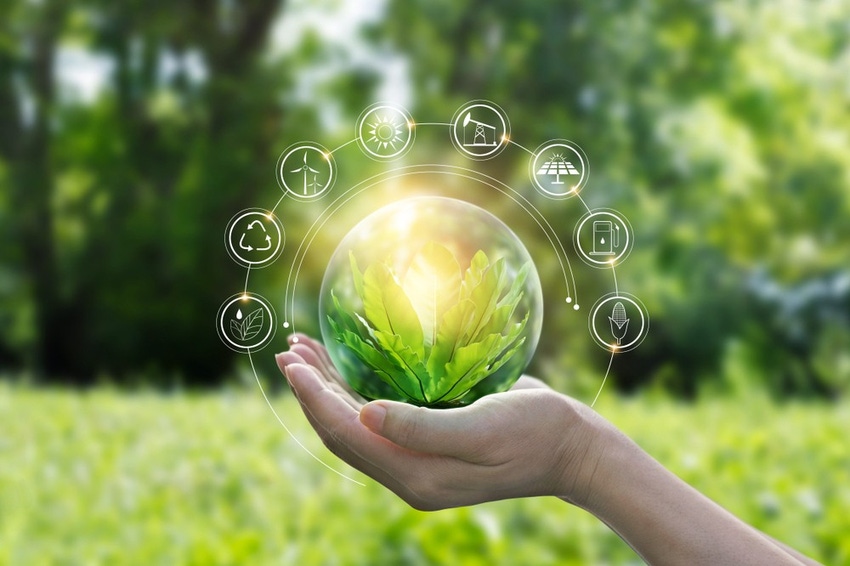Partners should work together to re-evaluate supply chains, collaborate on sustainability to meet ESG goals.
February 13, 2023


John Hayes-Warren
The technology channel has evolved significantly in recent years, yet IT leaders continue to come up against new challenges. As we move forward, obstacles faced last year will continue to hinder our progression. One of these obstacles is the re-evaluation of logistics and supply chain systems, with decarbonisation journeys also feeling the effect of rising costs and economic uncertainty.
Supply chain disruptions have massively impacted product availability in recent years, an impact that’s predicted to carry into the second half of 2023, leading to the disintermediation of the conventional supply chain. Many channel businesses are now streamlining their supply chain or choosing a different route to market to reconfigure logistics networks and delivery partners. These reasons, along with sustainability rapidly changing from a “nice to have” to a “need to have,” continue to transform the channel ecosystem as we know it.
Taking Action
The drive toward a more sustainable supply chain and implementing Scope 3 measures have had a notable impact on the channel, with businesses looking deeper into how their suppliers operate to only work with those who align with their own mission. As sustainability expectations accelerate across the sector, ensuring that companies collaborate with partners who are working toward a common end goal is a must, as businesses across the ecosystem need to take accountability for their actions and climate contributions.
Customers’ expectations are also driving partners toward adopting more sustainable measures, meaning the environmental, social and governance (ESG) framework is something that can no longer be ignored. (That framework helps stakeholders understand how an organization is managing risks and opportunities related to environmental, social and governance criteria.) End users have become more conscious of the journey their products are taking and the impact this has on the environment. With customers regularly looking for ways to improve their buying habits to lead a more sustainable lifestyle, 2022 saw more than 80% of consumers state that they would be willing to spend more money on products if they were considered sustainable.
Furthermore, there will be increasing expectations around businesses disclosing their Scope 3 emissions, as they now become the greatest share of an organisation’s carbon footprint. (Scope 3 emissions extend “upstream” within the supply chain and “downstream” to the reporting organisation’s customers.) Fewer than one in 10 organisations are currently implementing Scope 3 reporting, which includes all other indirect emissions that occur in a company’s value chain outside those included in Scopes 1 & 2, and just 14% are setting targets validated by the Science Based Targets initiative for all three emissions scopes. These reporting guidelines are part of international efforts to reduce greenhouse gas emissions.
In 2023, the channel ecosystem is going to continue shifting to incorporate sustainability in everyday operations, making it a leading factor in channel leaders decision-making. Increasing measures to achieve Scopes 1, 2 and 3 emissions and being open regarding the journey to net zero will play a considerable role in the successes that businesses and suppliers can achieve in the year ahead.
High-Value Collaborations
Digital transformation has come to the fore for channel partners, with programmes being overhauled as technology providers adjust to the rising demand and the need to stay compliant in a crowded and developing market. Businesses are now looking to work with other companies that offer opportunities for high-value collaborations in favour of traditional partners that operate in line with the direction in which the industry is heading.
ESG goals and digital transformation go hand-in-hand, as data is essential to measuring a business’ sustainability goals. Whilst the initial journey to achieving some ESG goals and Scopes 1, 2, and 3 reporting may be the first step, getting started and actually making a change is the hardest part. With 83% of consumers believing that businesses should be actively working on shaping their ESG goals, 2023 will see more channel businesses bringing this into their strategy plans with their partners.
Finding Common Ground
The technology channel is opting for quality, not quantity, with businesses in the sector ensuring they’re working with partners who align with their best practices. Establishing common ground with partners will not only help move channel companies toward their goals, but it will also open the door for collaboration and the sharing of best practices that will benefit customers and partners across the ecosystem.
What’s more, with the democratisation of technology, more power is shifting to the customer, who is becoming focused on rapid digitalisation and achieving outcomes. When working with the right partners, organisations in the technology channel can look to improve customer experience, pivot to digital and boost operational efficiency — ultimately finding the right balance between profit and purpose.
Just as recent years have been full of challenges, this year will be no different. With tightening budgets, a global focus on climate change and consumers shifting to a more sustainable lifestyle, there’s a lot for channel businesses to consider. Working with partners to build sustainability into all factors of a business’s operations can and should be a harmonious and collaborative process, resulting in everyone involved evolving their practices and reaching ESG goals.
John Hayes-Warren is chief revenue officer at Agilitas. You may follow him on LinkedIn or @AgilitasIT on Twitter.
About the Author(s)
You May Also Like


